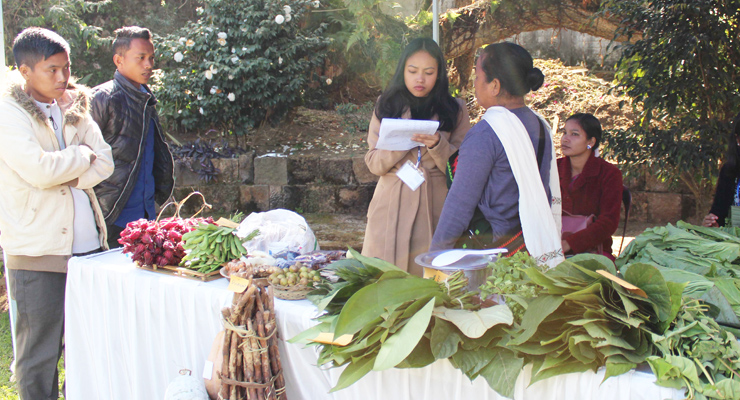
From taking a street food tour to eating at traditional restaurants, tasting local dishes and beverages to visiting farms and artisan producers, sharing meals with local people to participating in food events and festivals. According to the International Culinary Tourism Association, Culinary Tourism is defined as the pursuit of unique and memorable culinary experiences of all kinds, while travelling, but one can also be a culinary tourist exclusively. Culinary Tourism is a section of tourism which is growing exponentially every year and it deals solely with activities related to food. Food has always been a part of the hospitality sector that indulges with tourists but the term gained gained some attention in the 1990s. The popularity of this term actually started going uphill in the year 2001 when Erik Wolf, the president of the International Culinary Tourism Association (ICTA) defined culinary tourism as “The pursuit and enjoyment of unique and memorable food and drink experiences, both far and near”. Wolf also considers gourmet tourism, wine tourism and spa cuisine as subsets of culinary tourism.
The connection of taste with the joy of travelling experiences has become one of the most important factor of culinary tourism which educates food and wine enthusiasts while also inspiring the traveler to bare the chance of exploring the local area and learn about local food trends, cooking techniques and food history. But the term Culinary tourism has been replaced with the newly emerging one called “Food Tourism”. This can be witnessed at many places around the world because many people thought that the world culinary comes about as an elitist term.

There a lot of activities that come under culinary tourism like experiencing new food trends, food sampling, culinary competitions, wine and brewery tours etc. This section of tourism industry should be motivated to spread through out because it helps to give new pleasant experiences to the tourists but also it contributes a lot to the country's growth. More economic impact followed by attracting a diverse group of tourists which indirectly promotes the local community. It also gives an array of opportunities for employment whilst preserving the cultural heritage. Meanwhile interacting with the locals also adds an authentic touch to the overall culinary experience.
Culinary tourism is a fit for those who have the same amount of love for travelling as they have for food. Culinary travel is travel to learn about or enjoy unique and memorable eating and drinking experience, not necessarily just those that are exclusive or highly acclaimed, but all memorable eating and drinking experiences. Culinary traveler is an individual who has participated in one or more culinary activities while traveling in the past years. Cuisine is a saleable experience. Dining is the most memorable tourism experience. Nearly one hundred percentages of tourists dine out when traveling. Dining is consistently one of the top three favourite tourist activities. The higher the dinner bill, the more likely the patrons are tourist. Many culinary tourism are affluent individuals earning above average income. Interest in cuisine in travel is not reserved to a particular age, gender or ethnic of group.
There are many countries who specialize in this field and have famous foods linked to their names like Italy for pizzas and pastas, Japan for ramen and sushis, France for macaroons, Australia for meat pie, China for peking duck, Mexico for tacos, India for biryanis and fragrant curries etc. The popular culinary tourism destinations are France, Italy, California, where as Croatia, Vietnam and Mexico are the emerging destinations along with India which is developing and will soon become a contender in that list. Each of the places listed above like many other places have a rich culture associated with food while incorporating recent changes and fusion cuisines which adds to the experience of travelling just for the sake of some merry eating. Across the globe wine, beer and food festivals turn a particular place into food destination. Melbourne Food festival, Oktober fest in Munich, National Street food festival and Mei Ramew Festival in India etc. are some places that promote culinary tourism on a large scale.

Specific regions boosts the concept of culinary tourism. They promote culinary tourism as a core concept/product. Culinary packages are an attractive deal set by travel agencies for travelers and guests. It contains a wide spectrum of culinary tourism related activities with affordable rates. Apart from this social media has had a vast influence on this section of tourism. Foodblogs, instagram, twitter, facebook are some social media platforms that are utilized by today's generation to document their own experiences thus promoting. Role of celebrity chefs is also vital in promoting culinary tourism, people want to go and eat at places that have gathered a good social presence through the help of television and social media. In terms of culinary tourism, technology impacts on two aspects. First are the customers, who have instant access to emerging trends all over the world, which shapes their tastes and preferences of dining out, which in turn pressurize the food industry to be innovative and adaptive. Tourists are likely to plan their trips using online as well as print media, which provides wide options and choices, resulting in intense competition in the industry (Schmantowsky, n.d.). The impact of media in popularizing eating trends is evident from what is termed as “Delia effect”, when the TV show “how to cook” of Delia Smith in 1998, resulted in selling of 1.3 million extra eggs each day of the show (yeoman,2008).
As culinary tourism is correlated with most of the other forms of tourism, socio cultural, economic, technological and political impacts in most tourism sectors will affect the culinary tourism to a great extent. Due to increased competition, growing tourism price and other impacts, the industry in future will be more focused on leadership, organization and multifaceted trade linkages and enhanced communication with all stake holders. The enormous growth and multifaceted nature of tourism industry, will call for strengthened research, education and training to establish and promote new culinary products and to meet rising demand for skilled human resource. Initiating and promoting a sustainable way for this section of tourism is extremely important. As this field expands there are various concepts converged like eco-friendly initiatives which should be followed both by the tourists and the culinary destinations. So in conclusion, Culinary Tourism is a field that contributes in uplifting a nation's economy while providing a platform for exhibiting culture, traditions, beautiful geographical locations with the art of cooking.

By Chef Alpan Sharad Govitrikar,
Assistant Professor - T.S. Rahaman, Navi Mumbai




Be the first one to post a comment